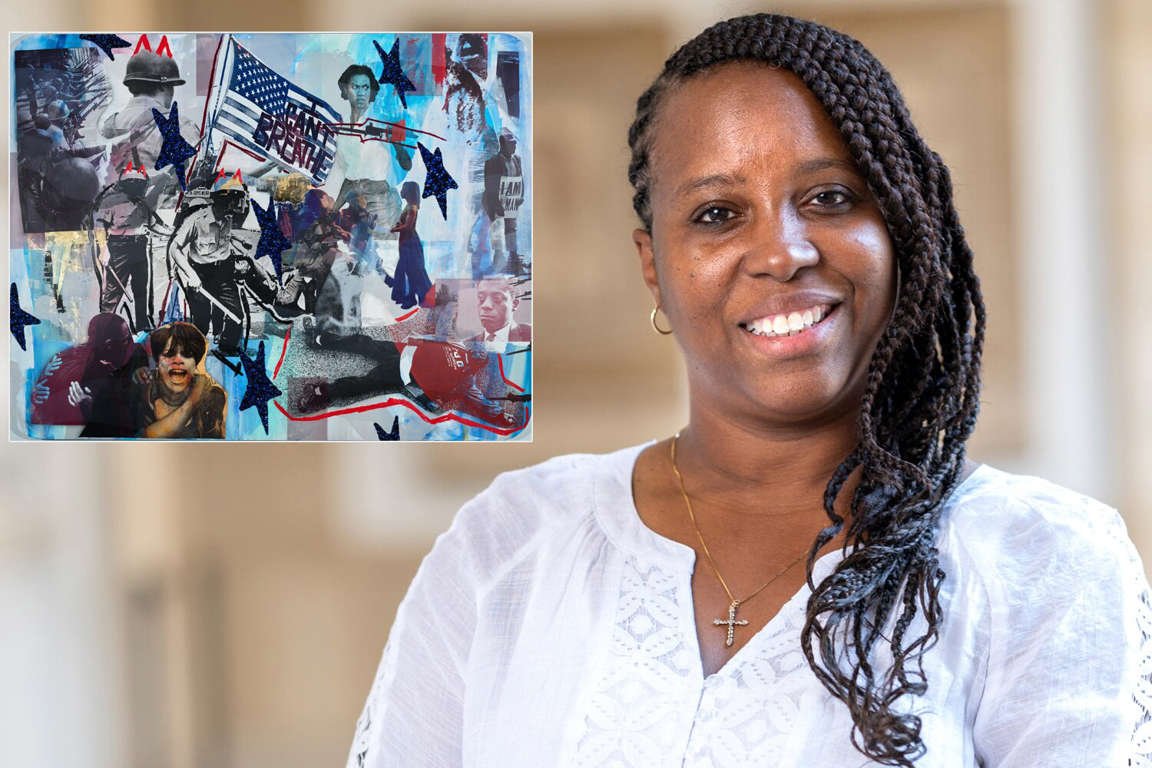Expanding Borders: Points of Negotiation
Adrienne Edwards and David Breslin
In some of my group coaching sessions, I’ve noticed a sticky issue that keeps individuals in a holding pattern—one barren of new possibilities or thresholds to leap across—a lack of confidence. These individuals most often recognize the barriers they’ve erected but have a hard time dismantling the obstructions they’ve put in place. Who they are and what gifts they bring are diminished by a lack of trust that prevents the emergence of any yet to be revealed talents.
As I read the New York Times article about the Whitney Biennial curators, David Breslin and Adrienne Edwards, the analogy of a border as a psychological manifestation took shape. Edwards says, “We think of a border as a divide, but actually it marks a point of negotiation … which opens up questions about other possibilities.” Breslin and Edwards want to use the sixty-three-artist Biennial exhibit, “Quiet as It’s Kept” to address America’s physical and psychological boundaries. This meant heading to Mexican border towns and including several indigenous artists in their curatorial process. Breslin says that they want to “create an ensemble where there are multiple narratives that can bleed in and out of each other.” As such, people viewing the exhibit could experience different ways of imagining the world.
Psychological borders, buttressed by self-doubt, fear, or externally imposed expectations, whittle away the confidence to move with ease and step across any seemingly impeding borders. Relational Grace is one way of dissolving those borders and expanding our sense of co-creative possibility—as exemplified in a story of a new kind of exhibit curation.
Traci Archable-Frederic and one of her selected pieces, Resist #2 by Mickalane Thomas and Kellen Johnson with his selection, Hale Woodruff's Normandy Landscape
Guarding the Art is a special exhibition at the Baltimore Museum of Art (BMA), curated entirely by a group of the museum’s security guards. The exhibit is the brainchild of BMA trustee Amy Elias and Chief Curator Asma Naeem, who had conversations about how to get the security guards more involved and, at the same time get different perspectives into the museum. They passed by the guards every day and didn’t even know some of their names. Seventeen guards were each asked to select three pieces from the museum’s collection that they wanted to exhibit, and then they were tutored on how to curate, set lighting, and write placards. Elias and Naeem described what they found as “more than enough love, curiosity, and knowledge of the art profession to curate an entire exhibition.”
Some of the seventeen guards are artists, while others are chefs, scholars, and writers. Elias says that the exhibit is more personal than a typical museum show because it gives visitors “a unique opportunity to see, listen and learn the personal histories and motivations."
BMA removed the borders—both internal and external—extending confidence in the guard’s ability to shape-shift and succeed beyond their usual identity-marker. Elias and Naeem showed interest beyond what they already knew of the guards’ capabilities—they provided an opportunity for each one to step into a new space, as they supported them through the process. One of the guards said that she gained confidence from the experience, as well as an increased understanding of what gifts she had to offer. The opportunity to be seen anew cannot be understated or undervalued.
When Greg and I went to the Met this past weekend to see An Afro Futurist Period Room and Fictions of Emancipation: Carpeaux Recast exhibits, I found my gaze resting a second or two longer on the security guards as we passed through the rooms, fed by a curiosity of what invitations might bring any dormant talents to the surface.
The perception of a barrier as a point of negotiation is a beautiful way to navigate beyond perceived, insurmountable borders. What barrier-crossing invitations might we extend to those around us?



